Navigating a Career in Graphic Design

Graphic design is a dynamic and creative field that involves creating visually appealing designs for various media. With the growth of digital media and online marketing, the demand for graphic designers has been steadily increasing in recent years.
Whether you are a student considering a career in graphic design or a professional looking to improve your skills and advance your career, this article provides an overview of the graphic design profession, including education and training requirements, job responsibilities, necessary skills, salary expectations, career paths, and government programs available to support graphic designers in the United States.
1.Job description
A graphic designer is a professional who uses visual elements, such as images, typography, and colors, to communicate messages and ideas to a target audience. Graphic designers create designs for a wide range of media, including print and digital media, such as logos, advertisements, brochures, websites, mobile apps, and social media content.
Graphic designers work closely with clients to understand their needs and develop designs that meet their specific requirements. They use various software tools, such as Adobe Illustrator, Photoshop, and InDesign, to create their designs. In addition to technical skills, graphic designers need to be creative, have strong communication skills, and be able to work well under pressure and meet tight deadlines.
Graphic designers play an essential role in creating visual content that informs, educates, and inspires people, and helps organizations achieve their goals.
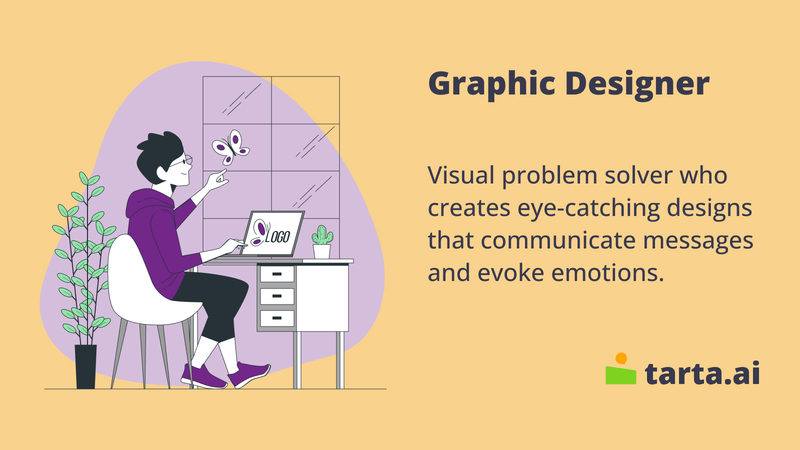
Requirements
The specific requirements for becoming a graphic designer may vary depending on the employer and the specific job. However, some general requirements for graphic designers include:
Requirement | Description |
Education and training | Most graphic designers have a bachelor's degree in graphic design or a related field. Some employers may also accept candidates with a two-year associate degree or relevant work experience. Graphic designers may also complete certifications or attend workshops to enhance their skills. |
Strong portfolio | A strong portfolio is essential for demonstrating your design skills to potential employers. The portfolio should showcase your best work and demonstrate your ability to create designs that meet the needs of different clients and industries. |
Proficiency in design software | Graphic designers should be proficient in popular design software such as Adobe Creative Suite (Photoshop, Illustrator, InDesign) or Sketch. Knowledge of web design software like HTML and CSS is also a plus. |
Creativity | Graphic designers need to be creative thinkers and problem solvers. They should have an eye for design, be able to create original and visually appealing designs, and be able to work within given constraints. |
Duties and responsibilities
The main responsibilities of a graphic designer include:
- Understanding client requirements: Graphic designers need to communicate with clients to understand their design requirements and expectations.
- Concept development: Graphic designers develop concepts and ideas for designs based on client requirements, industry standards, and current design trends.
- Creating visual designs: Graphic designers use design software and tools to create visually appealing designs for various media, such as print materials, digital media, or packaging.
- Selecting visual elements: Graphic designers select visual elements such as typography, color schemes, illustrations, and images to create an aesthetically pleasing and effective design.
- Editing and refining designs: Graphic designers edit and refine designs based on feedback from clients or other stakeholders.
- Meeting deadlines: Graphic designers work within project timelines and ensure that designs are completed within the specified deadlines.
- Collaborating with team members: Graphic designers often work as part of a team, collaborating with other designers, writers, or marketing professionals to create a cohesive design strategy.
- Staying up-to-date with design trends: Graphic designers need to stay informed about the latest design trends, software updates, and industry standards to create innovative and effective designs.
Interesting fact:
The first computer for graphic design, Apple Macintosh, was introduced in 1984, which revolutionized the industry by making design software more accessible and user-friendly.
In addition to the main responsibilities, a graphic designer may have additional duties, depending on the specific job and employer. Some examples include:
- Conducting research: Graphic designers may conduct research on industry trends, target audiences, or design best practices to inform their design decisions.
- Preparing design specifications: Graphic designers may prepare design specifications, including image size and resolution, color schemes, and typography, for printing or digital publishing.
- Managing project budgets: Graphic designers may be responsible for managing project budgets, including estimating costs and tracking expenses.
- Managing social media accounts: Some graphic designers may manage social media accounts and create content for various platforms.
- Providing customer support: Graphic designers may provide customer support and answer questions related to design projects.
- Presenting design concepts: Graphic designers may present their design concepts to clients or other stakeholders and explain their design decisions.
- Managing design files: Graphic designers may be responsible for managing design files and ensuring that they are stored in a secure and organized manner.
Overall, graphic designers play a critical role in creating visually appealing designs that communicate messages effectively and contribute to the success of organizations. Duties and responsibilities of a graphic designer may vary depending on the specific job and employer. However, this job often requires strong organizational, communication, and time-management skills in addition to design expertise.
Hard and soft skills
Hard skills and soft skills are both important for graphic designers to possess. Hard skills are technical skills specific to the job, while soft skills are personal attributes that help individuals work effectively with others. Here are some examples of hard and soft skills for graphic designers:
Hard Skills | Soft Skills |
Proficiency in design software such as Adobe Creative Suite, Sketch, or Figma. | Creativity and innovation to develop unique design concepts. |
Knowledge of web design software like HTML and CSS. | Communication skills to communicate effectively with clients and team members. |
Familiarity with design principles such as typography, color theory, and layout design. | Time management skills to manage multiple projects and meet deadlines. |
Ability to create original and visually appealing designs that meet client requirements. | Attention to detail to ensure that designs are error-free and meet requirements. |
Understanding of print production processes and file formats. | Problem-solving skills to overcome design challenges and create effective solutions. |
Knowledge of digital marketing and advertising trends. | Teamwork and collaboration skills to work effectively with others. |
Ability to work with vector graphics, raster images, and other design formats. | Adaptability and flexibility to adjust to changing client needs and project requirements. |
Overall, possessing a combination of hard and soft skills is essential for a graphic designer to succeed in their job and contribute to the success of their organization.
2. Salary
The salary of a graphic designer in the US can vary depending on several factors such as experience, location, industry, and education. According to data from PayScale, the median annual wage for graphic designers in 2023 is $49,061.
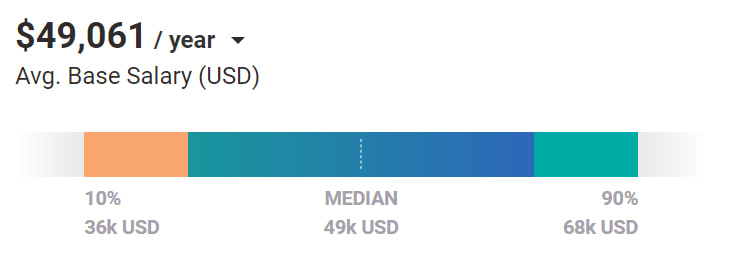
Source: PayScale
However, this median salary can range from $36,000 for the lowest 10 percent of earners to $68,000 for the highest 10 percent.
Also, factors like education and industry can affect salaries as well. For example, graphic designers working in advertising and public relations tend to earn higher salaries than those working in print or publishing.
Ways to improve earnings
Here are some ways that graphic designers can improve their earnings:
- Gain more experience: The more experience you have as a graphic designer, the more valuable you are to employers. You can gain experience by taking on freelance projects, working on personal projects, or seeking out internships or entry-level positions.
- Develop specialized skills: If you specialize in a particular area of graphic design, such as web design, user experience design, or branding, you may be able to command higher rates for your services. Consider investing time and resources into developing specialized skills to make yourself more marketable.
- Pursue advanced education: Pursuing advanced education, such as a master's degree in graphic design, can also help you earn higher salaries. It can also give you a competitive edge when applying for jobs or seeking out clients.
- Build a strong portfolio: A strong portfolio that showcases your best work can help you attract more clients and command higher rates. Make sure to keep your portfolio up to date and showcase your skills and expertise.
- Network and market yourself: Networking and marketing yourself can help you attract more clients and build your reputation as a skilled graphic designer. Consider attending industry events, joining professional associations, and utilizing social media to connect with potential clients and collaborators.
- Negotiate rates: When working with clients, don't be afraid to negotiate rates and fees. Research industry standards for pricing and be confident in advocating for fair compensation for your work.
Overall, improving earnings as a graphic designer involves a combination of developing specialized skills, gaining experience, and marketing yourself effectively.
Additional benefits
In addition to salary, there are several other benefits that graphic designers may receive from their employers. Some of these benefits include:
- Health insurance: Many employers offer health insurance as part of their benefits package, which can help cover the cost of medical expenses for you and your family.
- Retirement savings: Some employers offer retirement savings plans, such as 401(k)s, which can help you save for retirement.
- Paid time off: Paid time off, such as vacation days and sick leave, can give you the flexibility to take time off work without losing pay.
- Flexible schedules: Some employers offer flexible work schedules, such as telecommuting or flexible hours, which can help you maintain a work-life balance.
- Professional development opportunities: Employers may offer professional development opportunities, such as training programs or conference attendance, which can help you improve your skills and advance your career.
- Employee discounts: Some employers offer employee discounts on products or services, which can help you save money on everyday expenses.
There are many additional benefits to working as a graphic designer beyond salary. It's important to consider these benefits when evaluating job offers and determining your overall compensation package.
3. Job environment
Graphic design is a creative and dynamic field that involves the use of visual elements to communicate messages and ideas. Graphic designers play a critical role in shaping the look and feel of products, brands, and marketing campaigns across various industries, from advertising to publishing to web design. To succeed in this field, graphic designers must have a strong understanding of design principles, artistic skills, and the latest tools and technologies used in the industry.
Here, we will explore the tools and technologies used by graphic designers to create stunning visual designs that capture the attention of their audience. We will also discuss the different job environment settings where graphic designers work and the additional benefits they may receive beyond salary.
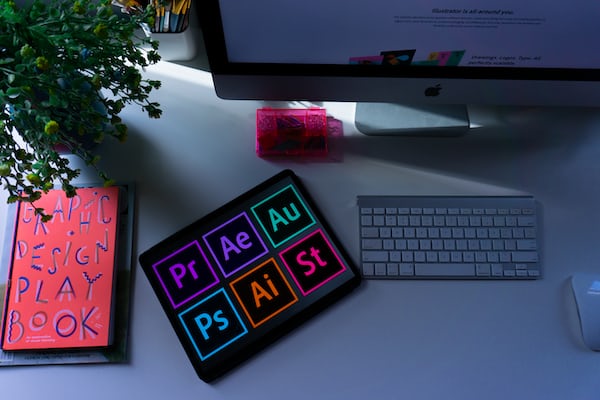
Photo: Emily Bernal/Unsplash
Graphic designers can work in a variety of environments, depending on their job role and employer. Some common job environment settings for graphic designers include:
- Advertising agencies: Many graphic designers work in advertising agencies, where they create designs for various marketing campaigns, such as print ads, billboards, and social media ads.
- Design firms: Design firms specialize in creating designs for a variety of clients across different industries, such as branding, packaging, and web design.
- In-house design teams: Some companies have in-house design teams, where graphic designers work exclusively for the company to create designs for products, marketing materials, and other assets.
- Freelance: Many graphic designers work as freelancers, where they have the freedom to work from home or a studio, and can take on a variety of projects for different clients.
- Education: Some graphic designers work in education, teaching graphic design courses at colleges or universities.
- Government agencies: Graphic designers may work for government agencies, creating designs for various public information campaigns, such as public health initiatives, emergency preparedness, and tourism promotion.
Graphic designers can work in a variety of job environment settings, depending on their interests and career goals. The job setting can affect the types of projects they work on, the types of clients they serve, and the overall work environment.
Also, graphic designers use a variety of tools and technologies to create their designs. Here are some common tools and technologies used by graphic designers:
- Graphic design software: Graphic designers use specialized software to create and manipulate digital images, such as Adobe Photoshop, Adobe Illustrator, and CorelDRAW.
- 3D modeling software: Some graphic designers may use 3D modeling software, such as Blender or Autodesk Maya, to create three-dimensional designs for products, architecture, or animation.
- Desktop publishing tools: Graphic designers use desktop publishing tools, such as Adobe InDesign, to create layouts and designs for print materials, such as brochures, magazines, and books.
- Web design tools: Web designers use tools such as Adobe Dreamweaver and WordPress to design and develop websites and web applications.
- Digital drawing tablets: Many graphic designers use digital drawing tablets, such as Wacom tablets, to draw and create designs more efficiently.
- Printing technology: Graphic designers need to understand printing technologies and the printing process to ensure their designs are accurately reproduced in print.
- Photography and videography equipment: Some graphic designers may also use photography and videography equipment, such as cameras and video cameras, to create visual content for their designs.
Graphic designers use a combination of software, hardware, and printing technologies to create and manipulate digital images for a variety of purposes, from print to web and beyond. Keeping up with the latest tools and technologies can help graphic designers stay competitive in the industry.
Interesting fact:
A survey by Adobe found that 59% of graphic designers feel that their job allows them to express their creativity, and 54% feel that their job is challenging.
In conclusion, graphic design is a multifaceted field that requires a combination of artistic talent, technical skills, and the latest design software and tools to create visually compelling designs. With the ever-evolving nature of the industry, graphic designers must stay up to date with the latest trends and technologies to remain competitive and successful. By continuously developing their skills, networking with other professionals, and building a strong portfolio, graphic designers can improve their earning potential and achieve their career goals. Whether working in-house for a company, in a design agency, or as a freelancer, graphic designers have the opportunity to make a meaningful impact on the look and feel of products, brands, and marketing campaigns across various industries.
4. Education
If you're interested in becoming a graphic designer, there are a few educational paths you can take to develop the skills and knowledge necessary to succeed in the field. Here are some options:
- Bachelor's degree in graphic design: Many universities offer bachelor's degrees in graphic design. These programs typically take four years to complete and cover topics such as typography, branding, illustration, and web design. A degree in graphic design can help you develop a strong foundation in the field and prepare you for a wide range of job opportunities.
- Associate degree or certificate in graphic design: If you're looking for a shorter and more affordable option, you can consider getting an associate degree or certificate in graphic design. These programs typically take two years or less to complete and cover similar topics as a bachelor's degree program. However, they may be more limited in scope and may not offer as many job opportunities.
- Self-directed learning: Another option is to teach yourself graphic design through online resources, tutorials, and practice. This approach may take longer and require more discipline, but it can be a cost-effective way to learn the skills you need. There are many online resources available, including YouTube videos, online courses, and design communities.
- Apprenticeships or internships: If you're looking to gain hands-on experience, you can consider applying for an apprenticeship or internship with a graphic design firm. This can provide you with valuable experience and help you develop your skills under the guidance of experienced designers.
Also, there are several certifications available for graphic designers that can demonstrate their skills and knowledge to potential employers. Here are a few examples:
- Adobe Certified Expert (ACE): The ACE certification is offered by Adobe and demonstrates proficiency in one or more Adobe software applications, such as Photoshop, Illustrator, or InDesign.
- Certified Brand Strategist (CBS): The CBS certification is offered by the Brand Establishment and demonstrates expertise in brand strategy, identity, and design.
- Certified Web Designer (CWD): The CWD certification is offered by the World Organization of Webmasters and tests proficiency in web design, development, and programming.
These certifications can help set you apart from other job candidates and demonstrate your commitment to your craft. However, it's important to note that certifications are not a substitute for experience or a strong portfolio of work. They can be a valuable addition to your credentials, but they should be pursued in conjunction with other educational and professional development opportunities.
Interesting fact:
The highest-paying industries for graphic designers are advertising, public relations, and specialized design services.
Regardless of the educational path you choose, it's important to have a strong portfolio of work to showcase your skills to potential employers. This can include projects you've completed in school, freelance work, or personal projects.
5. Career path
This section provides an overview of ways to develop a career in graphic design, as well as some of the subfields within the industry and alternative career options for those interested in design. Whether you're just starting out in graphic design or considering a change in career, this text provides practical advice and suggestions for how to get started and grow within the industry.
There are several ways to develop a career as a graphic designer:
Way | Description |
Get a formal education | Pursue a degree or diploma in graphic design from a reputable institution. This will give you the foundational knowledge, skills and exposure to industry-standard design software, tools and techniques. |
Build your portfolio | Start creating a portfolio of your design work, even if it's just for personal projects or mock assignments. As you gain more experience, you can add more professional pieces to your portfolio. |
Internships and apprenticeships | Look for opportunities to gain practical experience by working with established designers or design firms. Internships or apprenticeships can provide you with real-world experience, feedback and mentorship. |
Network | Attend design-related events and conferences to meet other designers, potential clients or employers. Join design groups or communities, participate in online forums or social media groups to expand your network and learn from others. |
Specialize | Identify a niche area of design that you're passionate about and develop your skills and expertise in that area. This could include branding, web design, packaging, illustration or motion graphics. |
Continuous learning | The field of graphic design is constantly evolving, so it's important to continue learning and expanding your skill set. Take online courses, attend workshops, and engage in self-directed learning to stay up-to-date and improve your craft. |

Photo: Faizur Rehman/Unsplash
Graphic design is a diverse field that encompasses many subfields. Some of the most common subfields include:
- Branding and identity design: This involves creating a visual identity for a company or organization, including logos, typography, color schemes, and other branding elements.
- Web design: This involves designing websites and digital interfaces for desktop and mobile devices.
- User interface (UI) design: This involves designing the visual layout and user interface of software and digital applications.
- Print design: This includes designing print materials such as brochures, posters, packaging, and other promotional materials.
- Advertising design: This involves creating visual concepts and campaigns for advertising materials such as billboards, print ads, and digital ads.
- Motion graphics: This involves designing moving images and animation for film, television, and other digital media.
- Illustration: This involves creating original illustrations for use in print and digital media.
- Environmental design: This involves designing graphics and signage for physical spaces such as retail stores, museums, and public spaces.
- Packaging design: This involves designing packaging for consumer products, including structural design, graphics, and branding elements.
Interesting fact:
In a survey conducted by The Creative Group, 55% of creative managers said that their team's graphic design workload had increased in the past year.
If you're interested in design but would like to explore alternative career options, here are some ideas:
- User experience (UX) design: UX designers focus on designing digital products and services that are user-friendly, intuitive, and enjoyable to use.
- Product design: Product designers work on the physical design and functionality of consumer products, from furniture to technology gadgets.
- Industrial design: Industrial designers create and develop the form and function of products used in everyday life, such as cars, appliances, and medical equipment.
- Interior design: Interior designers create and design spaces that are functional, beautiful, and reflect the personality and preferences of their clients.
- Architecture: Architects design and plan buildings and other physical structures, from homes to commercial buildings and public spaces.
- Art direction: Art directors manage the creative aspects of visual media projects, including directing photography, video production, and other creative disciplines.
- Advertising and marketing: If you enjoy designing and creating visual marketing campaigns, you could consider a career in advertising or marketing.
- Animation: Animators create animated films, television shows, and digital media using a variety of techniques, including 2D and 3D animation.
- Game design: Game designers create and develop video games for consoles, computers, and mobile devices.
- Education and teaching: If you have a passion for design and want to share your knowledge with others, you could consider a career in education, teaching graphic design or other creative disciplines.
So, if you want to develop a career in graphic design, there are several ways to get started, such as getting a formal education, building a portfolio, gaining practical experience through internships or apprenticeships, networking, specializing, and continuous learning.
6. Job market
Demand for graphic designer
The demand for graphic designers varies depending on several factors, such as industry trends, economic conditions, and advancements in technology. Overall, however, the demand for graphic designers has been steadily increasing in recent years due to the growth of digital media and online marketing.
With the rise of social media and e-commerce, businesses are increasingly relying on visual content to communicate their message to their target audience. As a result, graphic designers are in high demand to create visually appealing and engaging content for websites, social media, advertising, and other digital platforms.
In addition, the demand for graphic designers in traditional print media, such as magazines, newspapers, and packaging design, has also remained relatively stable.
The Bureau of Labor Statistics (BLS) projects that employment of graphic designers will grow 3% from 2021 to 2031, which is about a little bit slower than the average for all occupations. However, the BLS notes that competition for jobs in the field is strong and that individuals with a strong portfolio and a wide range of skills will have the best job prospects.
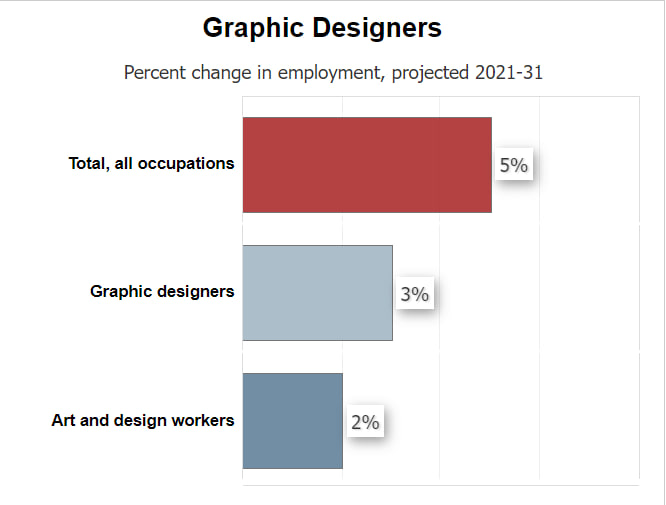
Source: U.S. Bureau of Labor Statistics, Employment Projections program
Part-time and remote jobs
As the demand for digital media and online marketing continues to grow, there are plenty of part-time and remote job options available for graphic designers. Here are some options to consider:
- Freelancing: Freelance graphic designers can work from anywhere, set their own hours, and choose which projects to take on.
- Remote graphic design jobs: Many companies are now hiring remote graphic designers for part-time and full-time positions.
- Design contests: Graphic designers can participate in online design contests on websites such as 99designs or DesignCrowd to win prizes and gain exposure.
- Social media management: Many businesses need help with managing their social media accounts and creating visual content for their social media posts. Graphic designers can find part-time or freelance opportunities in this field.
- Online education: Graphic designers can also teach online courses in graphic design, using platforms such as Skillshare, Udemy, or Coursera.
Overall, with the growth of digital media and online marketing, there are many part-time and remote job options available for graphic designers. The key is to be proactive in finding these opportunities and building a strong portfolio and reputation in the field.
7. Job satisfaction
Graphic design is a highly sought-after profession that allows individuals to showcase their creativity and artistic talents while making a positive impact on businesses and organizations. However, as with any job, there are both advantages and disadvantages to pursuing a career in graphic design.
In this section, we will explore the various pros and cons of a graphic designer job. From the flexibility and variety of the work to the competitive job market and high expectations, we will examine the key aspects that individuals should consider before pursuing a career in graphic design.
Pros | Cons |
Creativity Graphic design is a highly creative profession that allows designers to showcase their artistic talents and create visually appealing designs. | Competition With the popularity of graphic design as a profession, the job market can be highly competitive, and it may be challenging to find a job. |
Flexibility Many graphic designers have the option to work remotely or on a flexible schedule, which can be beneficial for those who prefer a work-life balance. | Pay Graphic design salaries can vary significantly based on location and experience, and entry-level salaries can be lower than those of other professions. |
Variety Graphic designers work in a range of industries and can specialize in various areas such as web design, print design, or branding. | High standards Clients and employers may have high expectations for designs, which can be challenging for designers to meet consistently. |
Career opportunities With the increasing demand for design in digital marketing and advertising, there is a growing demand for skilled graphic designers, which means there are numerous career opportunities available. | Deadlines Graphic designers may have to work under tight deadlines, which can be stressful and require long hours. |
Personal satisfaction Many designers find satisfaction in seeing their designs come to life and having a positive impact on their clients' businesses. | Continuous learning Graphic design is constantly evolving, and designers must keep up with the latest trends and technologies to stay relevant, which may require additional training or education. |
Graphic design can be a rewarding profession for those who are passionate about art and design. The job offers the opportunity for creativity, variety, and personal satisfaction. However, there are also challenges to consider, such as competition, pay, high standards, tight deadlines, and the need for continuous learning to stay relevant in a constantly evolving industry. Overall, it is essential to carefully weigh the pros and cons of a graphic designer job to determine if it is the right career path for you. With dedication and hard work, graphic design can be a fulfilling and successful career.
8. Government programs
There are various government programs available for graphic designers in the United States, depending on their specific needs and qualifications. Here are a few examples:
- Small Business Administration (SBA) Programs: The SBA offers a range of programs and services to help graphic designers and other small business owners start, grow, and succeed. This includes access to loans, grants, training and counseling, and contracting opportunities with the government.
- National Endowment for the Arts (NEA) Grants: The NEA provides grants to support the creation and presentation of art, including graphic design. These grants can be used for a variety of purposes, such as developing new work, building skills and knowledge, and reaching new audiences.
- Workforce Innovation and Opportunity Act (WIOA) Programs: WIOA offers funding for job training and education programs for individuals who are unemployed or underemployed, including graphic designers. These programs may provide training in specific graphic design software or techniques, as well as business skills like marketing and project management.
- Federal Work-Study Program: This program provides part-time jobs for undergraduate and graduate students with financial need, including those studying graphic design. Work-study jobs may be available on campus or with off-campus organizations, and can help students gain valuable experience and skills while earning money to pay for their education.
- State and Local Grants and Loans: Many states and local governments offer their own programs to support small businesses and creative industries, including graphic design. These programs may include grants, loans, tax incentives, and other forms of financial assistance.
It's important to research and explore the eligibility requirements, application process, and deadlines for each program, and to reach out to the relevant agencies and organizations for more information and guidance.
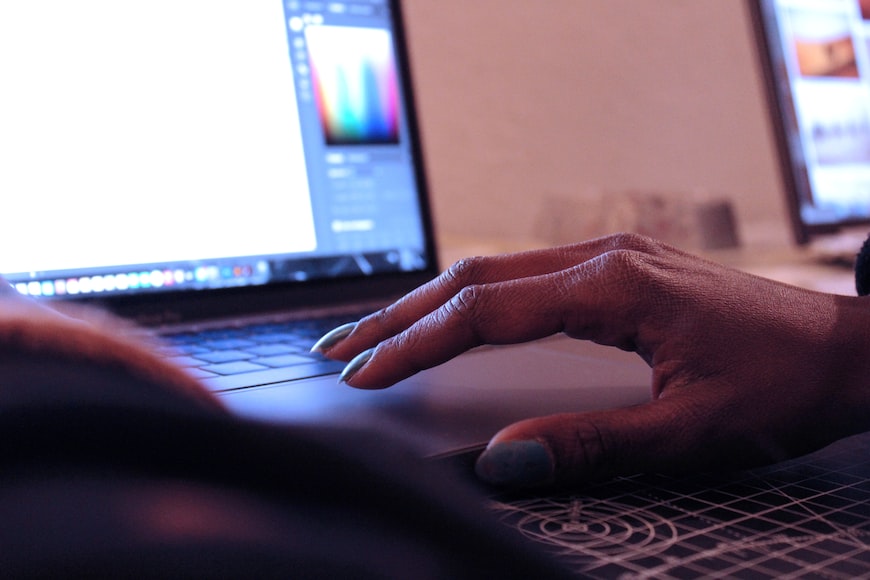
Photo: Gaetano Sferrazza/Unsplash
Graphic design is a diverse and exciting field that offers many opportunities for those with a passion for creativity and design. As the demand for digital media and online marketing continues to grow, the need for skilled graphic designers is likely to increase, creating numerous job opportunities in various industries. To succeed in this field, it is essential to possess a combination of technical skills, personal attributes, and a strong portfolio showcasing your design skills. By continuously learning, staying up-to-date with industry trends, and networking, you can advance your career and achieve success as a graphic designer. Finally, with the availability of government programs and financial assistance, aspiring graphic designers have access to various resources and support to help them start, grow, and succeed in their careers.
FAQ
What is the job of a graphic designer?
The job of a graphic designer is to create visually appealing designs for various media, including print materials, digital media, or packaging. They are responsible for understanding client requirements, developing concepts, selecting visual elements, editing and refining designs, meeting deadlines, collaborating with team members, and staying up-to-date with design trends.
What education do I need to become a graphic designer?
Typically, a bachelor's degree in graphic design or a related field is required to become a graphic designer. However, there are also associate degrees, certificates, and self-taught options available. Additionally, it's important to have a strong portfolio showcasing your design skills, proficiency in design software such as Adobe Creative Suite, and creative and problem-solving abilities.
What skills do I need to become a graphic designer?
Both hard skills and soft skills are important for graphic designers to possess. Hard skills include technical skills specific to the job, such as proficiency in design software and knowledge of design principles, while soft skills include personal attributes that help individuals work effectively with others, such as creativity, communication skills, and adaptability.
What are the different subfields within graphic design?
Graphic design is a diverse field with several subfields, including branding and identity design, web design, print design, advertising design, motion graphics, illustration, environmental design, packaging design, and art direction.